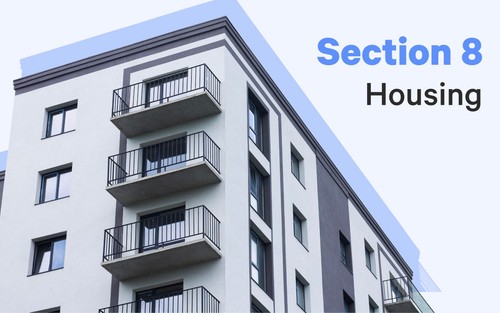Rent control has been around since the 1920s to protect low-income tenants and increase the availability of affordable housing. It’s not a widespread practice, but it can significantly affect your real estate investment and pricing strategy.
This article covers how rent control works, its pros and cons, and reviews current rent control laws. Use it as a guide when determining where you’d like to invest.
Key takeaways:
- Rent control refers to legislation that is designed to control rent increases.
- Five states (California, Maryland, New Jersey, New York, Oregon) and Washington, D.C. have rent control laws.
- Renter protections are set by the federal government down to the state and local levels.
- Landlord rights are determined by state law and local municipalities.
- Know the area’s rent control and tenancy laws before you purchase a rental property.
What is rent control?
Rent control, or rent stabilization, is a term used to describe any legislation that controls rent prices. Rent control laws restrict how much and how frequently rent can be raised. Rent increases can be limited by a flat percentage or an actual price.
There are two types of rent control. They are:
- Vacancy control. When an existing tenant moves out, landlords can only raise the rent once per year and by a limit set by a rent control board. This is often referred to as “true rent control.”
- Vacancy decontrol. When an existing tenant moves out, landlords can increase rent up to the market rate. When a new tenant moves in, rent increases will be limited to a set percentage each year.
Rent control is designed to keep housing affordable and protect tenants. As a result, it’s common in cities with a high cost of living, high rental prices, and limited housing.
Tenant rights
Some municipalities have adopted rent control ordinances as a form of tenant protection.
Renter protections, or Renters’ Rights, refers to federal, state, and local laws that prevent housing discrimination and rent gouging. They also give tenants legal recourse if a landlord lets the rental property become uninhabitable.
Renters’ Rights include:
- The right to fair housing. No one can be rejected from renting a property based on race, color, religion, age, sex, national origin, family status, or disability under the federal Fair Housing Act.
- The right to a habitable home. Landlords are required to make necessary and timely repairs to keep the home in a livable condition.
- The right to privacy. Some state laws do not allow landlords to go into a rental property without notice.
- The right to your security deposit. State laws control the nuances of how security deposits must be managed. However, landlords must return the deposit within a set timeframe and provide written documentation if any of it is withheld.
- The right to an eviction notice. Tenancy laws allow landlords to evict tenants for just cause, like if they breach their lease. However, renters are entitled to a notice of a claim of eviction and time to correct the reason before they can be evicted.
Landlord rights
Even though rent control is a type of renter protection, it doesn’t mean landlords or property owners don’t have rights.
Unlike renter protections that are determined by federal laws down to local laws, landlord rights are determined by state and local laws. As a result, they can vary from location to location. Be sure to review your local landlord-tenant laws to understand the landlord rights in the area you are looking to purchase a rental property.
Landlord rights typically include:
- The right to choose who lives in their rental properties. If it doesn’t violate the Fair Housing Act, landlords have the right to screen tenants and choose who lives on their property.
- The right to determine the terms of a lease. Landlords have the right to decide everything from when rent is due to whether pets are allowed.
- The right to collect rent. Most landlords receive rent in the form of monthly payments. However, they have the right to accept payment in exchange for services like property management.
- The right to evict tenants. If tenants break their lease or fail to pay, landlords have the right to begin the eviction process. However, laws around eviction vary, so be sure to study your local eviction laws.
- The right to stop renting the property. Property owners are not required to keep renting a property if they don’t want to.
- The right to sell the rental property. Property owners are allowed to sell their rental properties.
Pros and cons of rent control
Rent control offers many benefits with few drawbacks for tenants, but what about property owners? Here’s a look at some of the pros and cons of rent control for real estate investors.
Pros of rent control
- Predictable rent increases. This can help attract and retain tenants because they know, upfront, how much their rent will increase each year.
- Less tenant turnover. That’s right! Rent-controlled properties are hard to come by. That’s why tenants tend to stay in them a lot longer. This is a win for tenants and property owners.
Cons of rent control
- Rent can fall below rental market prices. This is especially true in municipalities with vacancy control laws where rent-controlled apartments and houses tend to fall below market rents. As a result, property owners won’t make as much income from their properties.
- Discourages new development. Real estate investors and developers lose the incentive to build new apartments and homes when rent control laws exist. Why? They don’t have the freedom to choose how much rent they can charge, and, as a result, it can take them much longer to earn a good return on their investment.
States with rent control
As of November 2022, five states and Washington, D.C., have rent control regulations. We’ve provided a high-level overview of how each state has enacted rent control regulations. Use it as a guide when deciding to purchase a rental property.
California
In 2019, California passed AB 1482, which imposed statewide rent stabilization and eviction protections.
The California rent control law states that rent increases can be no more than 5% each year, plus a cost of living increase of up to 5%. In short, landlords in California can only raise rents by 5-10% each year depending on the cost-of-living increase. This is known as the “allowable increase.”
The law also labels non-renewal of lease agreements as “no-fault evictions.” Landlords are only allowed to non-renew tenants under one of the following circumstances:
- The owner moves into the rental unit themselves,
- The owner converts the property into a condominium, or
- The owner renovates or demolishes the rental unit.
In these circumstances, the law requires landlords to pay tenants a “relocation fee” equal to one month’s rent.
AB 1482 is effective until January 1, 2030, unless extended by legislators.
It’s essential to note that AB 1482 only applies in cities and municipalities that don’t have stricter rent control policies.
That’s right! Over a dozen California cities have additional rent control regulations. They include San Francisco and Los Angeles.
Review local rent control laws if you want to purchase a rental property in California.
Maryland
Unlike California, Maryland has no state law limiting rent increases. However, a few local and city governments have enacted rent control regulations.
- Montgomery County (the most populous county) limits rent increases to once per year and requires 90 days’ notice for a rent increase
- Baltimore City requires 60 days’ notice for a rent increase
- Takoma Park limits rent increases to once per year, limits rent increases based on annual reports and requires 60 days’ notice for rent increases
Baltimore County releases the annual Consumer Price Index (CPI) for the Baltimore-Washington Metropolitan Area. The CPI provides recommendations for rental rates based on yearly trends and historical data. Takoma Park uses these numbers when determining its allowable increase.
New Jersey
The State of New Jersey does not have a law limiting rent increases. However, like Maryland, municipalities are allowed to adopt rent control ordinances.
Over 100 cities in New Jersey have some form of rent control regulation, including Newark, Jersey City, Trenton, New Brunswick, and Camden.
Newark has the longest-standing rent control regulations. They limit rent increases for specific properties, including all non-owner occupied 1–4-unit buildings and complexes and historic buildings.
Review the local tenancy laws if you’re looking to invest in New Jersey real estate.
New York
New York does not have a state law controlling rent increases. However, several municipalities have rent control, including New York City (NYC), Nassau, and Westchester counties.
Let’s take a look at New York City’s rent control laws.
NYC has two rent regulation programs covering individual units, like condos or apartments, or whole multifamily housing buildings. They are:
- Rent control. These units account for about 1% of rental units because the current tenant must have lived in the same apartment since 1971. In rent-controlled units, rent increases incrementally and cannot exceed a “maximum base rent” that covers the landlord’s cost for upkeep. When the tenant moves out, these apartments usually convert to rent stabilization.
- Rent stabilization. This program applies to about 44% of rental units. In rent-stabilized units, the building must have been constructed before 1974 and have six or more units. Rent-stabilized tenants see a limited annual rent increase.
Oregon
Like California, Oregon has a statewide rent control law passed in 2019. SB 608 set the maximum rent increase in Oregon to be 7% plus the West Coast Consumer Price Index which changes each year. For 2022, the maximum rent increase in Oregon was 9.9%. For 2023, it is 14.6%.
The municipalities in Oregon do not currently have additional rent control laws.
Washington, D.C.
The Rental Housing Act of 1985 is Washington, D.C.’s rent control law. It sets rent increase limits on all rental housing, including apartments and single-family homes. This law allowed Washington, D.C., to halt all rental increases during the pandemic.
The Rental Housing Act also includes exemptions from rent control. Rental units that qualify for exemption are:
- Federally or District-subsidized
- Built after 1975
- Owned by a natural person (i.e., not a corporation) who owns no more than four rental units in D.C.
- Vacant when the Act took effect
The bottom line
Rent control places limits on the amount a landlord can demand rent. There are no federal rent control laws, but five states and Washington, D.C., have laws on the books. Some are vacancy control laws, while others are vacancy decontrol laws. The details vary, but they’re all intended to keep housing affordable for lower-income tenants. However, rent price controls can significantly affect a real estate investor’s bottom line. Familiarize yourself with your local laws before leasing your rental property.
Want to invest in real estate without worrying about rent control laws?
Let us help. Our platform enables you to buy shares of properties, earn rental income, and build equity without the hassle of managing one. Browse our available properties to start investing in real estate today.







